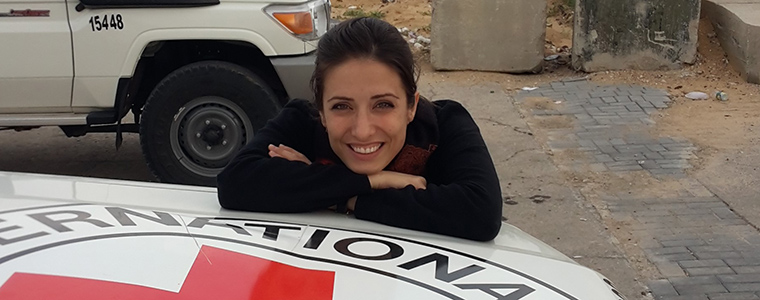
In 2011, U of T Engineering alumna Sara Badiei (ElecE 0T4) left a career as a power systems engineer at a large Southern California energy company to turn her talents towards humanitarian work.
Since then, she has travelled the world with Médecins Sans Frontières, the International Committee of the Red Cross (ICRC) and the World Bank, rebuilding infrastructure in war zones and helping to treat thousands of people in areas affected by natural disasters and disease.
Badiei provides an in-depth account of her humanitarian aid experiences in the 2016 issue of Skulematters. Below are three of her favourite memories from her time abroad.
Magical moments in the Congo

“I was with Médecins Sans Frontières France in the jungles of the Democratic Republic of the Congo trying to find a particular Pygmy population. A pretty bad disease was going around the villages, but there was a very simple treatment — just one course of antibiotics and it was gone. To get to these villages, we had to go through the most stunning and totally virgin jungles. We slept in the Pygmy camps and participated in their daily rituals. One night they even put a grass skirt on me and I danced with them around their fire as they played music. There were absolutely no lights, so the night sky was beautiful and we were next to a river studded with fireflies. I remember the water was twinkling. During the day we paddled our boats down the river through thick, lush jungles. It was just a magical place.”
A symphony of repair in the Philippines

“In the Philippines, Typhoon Haiyan had just hit and wiped out people’s homes. It was the rainy season and people were living outside with no shelter. When it rains over there it’s like opening a showerhead. Children were soaking wet every day. It was terrible. Médecins Sans Frontières Holland organized a distribution of construction materials, very basic stuff like hammers and tarpaulins. In each village there were lineups as far as the eye could see with all these smiling faces. They would take the hammer, nails, tarpaulin and go to the top of their houses and start repairing the damage. By the time we finished a distribution, the whole village was on their roof, banging away with their hammers, and it sounded like the most beautiful symphony. That night, the villagers didn’t sleep in the rain and their kids weren’t soaked to the bone. It was a really beautiful mission.”
Revitalizing infrastructure in Gaza

“A big war took place in Gaza in the summer of 2014. There was a lot of destruction to houses, facilities, and power, water and sewage lines. It impacted a large population. Because it’s a very urbanized place, if electricity fails, all of a sudden the water and sewage stations can’t pump water, hospitals and telecommunications networks are affected — everything goes down. On top of that, the power plants were out of order. The ICRC was trying to move crews to the sites to make repairs, except the sites were all located where the heaviest conflict was happening. It took about five days to repair one of the damaged sites, but we were able to re-connect hundreds of thousands of people to water and the electricity supply. We also repaired many essential infrastructures including hospitals, sewage-pumping stations and more.”
